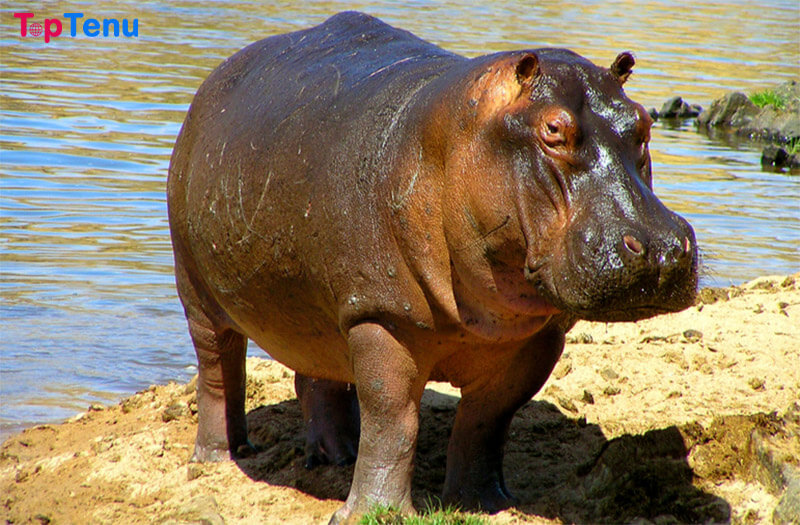Honeybee History Of Super Rare Colt Revolvers
Others include the machine pistols and the derringers. But they aren’t often used as revolvers and semi-automatic pistols. Before guns became massively produced and almost available to everyone of age licensed to carry one, they often use them to complement an office’s badge.
The same way ceremonial swords were being used for the same purpose. Handguns in the days of old were highly valued and rare. Despite its small size, it was more expensive than the long guns manufactured back then, and only but a few people could afford them.
But it all changed in 1836 when Samuel Colt patented the Colt Paterson. This marked the beginning of the massive production of revolvers. The Colt revolver became many people’s favourite because it could fire up to five shots in split seconds.
In the twinkle of an eye, they became many people’s choice of defense weapon. The phrase “God created men, but Colt made them equal” equally became sung on many lips in that era.
All thanks to this great invention. Today, handguns are mostly used as side arms by force men (police and army). But in countries like the United States and a few others worldwide, most of their citizens have access to these handguns as a form of self-protection.
The Striking era The Colt Paterson, which Samuel Colt patented in 1836, became the first massively produced revolver. This unique handgun uses multiple chambers, which were conjoined with a single and fixed barrel.
The colt was produced in .28 calibre in the first-year production but was upgraded to a .36 calibre in the year that followed. When the colt was first manufactured, it initially had a loading lever and whoever carries the firearm had to disassemble it every time to reload.
But things took a different turn in 1839 as the reloading lever and capping window were introduced. A folding trigger that only becomes visible upon pressing it was invented alongside the reloading lever.
The innovation kept improving as a series of revolvers were made afterwards, and the Colt Walker was next in line. In 1846, American firearms inventor named Samuel Colt collaborated with Captain Samuel Hamilton Walker to produce the Colt Walker revolver.
And this handgun was a sleek single-action revolver that came with a revolving cylinder capable of holding six charges of black power for six bullets.
The Colt Walker revolver was also a .44 Caliber lead ball and the largest and most powerful black powder repeating handgun ever invented globally.
In 1851, Samuel Colt released another invention which he called the Navy Revolver. This was a much lighter six-round .36 calibre than the one before it.
But despite its lightweight, it’s was a larger version of the .31 calibre Colt Pocket Percussion Revolvers that originated from models such Baby Dragoon and others. The Navy Revolver quickly became famous in North America because it was invented during Western expansion. Its size equally made it suitable to be carried around a belt holster.
The Metallic During this time, Samuel Colt massively advertised both the Navy revolver and others before it circulated Europe, Asia and Africa. After the release of the Colt Navy Revolver in 1851 came the Colt Army Model in 1860.
And this 6-shot muzzle-loaded cap and ball .44-caliber single-action revolver became one of the military’s favourites and was used as a sidearm during the American Civil war.
It is also on record that they invented over 200,000 pieces of this weapon between 1860 and 1873. And during this time, the US government, Colt’s biggest customer, purchased and distributed about 129,703 units to its troops.
A bullet from this weapon can travel between 75 to 100 yards from whoever shot it. When this handgun is fired, its bullet had a muzzle velocity of close to 900 feet per second.
But again, this also depends on how much powder it was loaded. Cartridge Era After Samuel Colt and Captain Samuel Hamilton Walker’s era came to an end, the Smith & Wesson era began.
And the Smith & Wesson Model 1 was the first firearm invented by the duo. And it took them about seven years (1857 to 1882) to produce this model.
When it was released, it soon became the first commercial revolver to successfully use metallic rimfire cartridges instead of the normal loose powder, musket ball and percussion caps. This revolver also holds up to seven .22 Short black powder cartridges.
The Duo (Smith & Wesson) made another upgrade to their handguns, and this time they called it Smith & Wesson Model No. 2 Army. This revolver is a 6-shot, .32 calibre revolver with the first model’s small size with a bigger and more efficient cartridge.
The Duo invented this model between 1861 and 1874. And during the timeframe, a total of 77,020 units were made. The Smith & Wesson Model 3 was the next weapon that followed. This model was a 6-shot, single-action cartridge-firing weapon.
And the duo, between 1870 and 1915, invented a top-break revolver which was initially meant to chamber the .44 S&W American and .44 Russian cartridges but was later produced in an assortment of calibres. Some of the chambers include; .44 Henry Rimfire, .44-40, .32–44, .38–44, and .45 Schofield.
One similar thing that these revolvers have in common is that they would automatically eject their spent shell cases whenever they are opened.
Another top-notch weapon that quickly rose to stardom is the Colt Single Action Army, otherwise known as the Single Action Army, Model P, SAA, Peacemaker. It is a single-action revolver handgun that holds up to six metallic cartridges at once.
It was initially designed as a test-run service revolver for the U.S government but was later accepted as a standard military service weapon until 1892.
This weapon was equally offered in more than 30 various calibres and different barrel lengths. No further changes were made to this weapon until 1873. Although the manufacturers (Colt), for various reasons, halted its production twice, it resurfaced as a result of high demand. Ranchers, lawmen and outlaws are among the few people that high demand for this weapon, but Cowboy Action Shooters mostly ordered it.
The Colt SAA “Peacemaker” revolver is also known for its Americana slang “The Gun That Won the West.” In 1889, Colt announced the release of another thrilling revolver which they called the Model 1889.
Compared to the models before it, this revolver was a more modernized double-action revolver. The main difference between this innovation and the former is that they have a swing-out cycler instead of the previous ones with top-breakers.
The swing-out cylinders clip faster because they had a combination of the best features. Seven years after, Smith & Wesson returned with the “Hand Ejector, Model 1896” in .32 S&W Long calibre.
But that wasn’t the only cat they wanted to let out of the bag as a very similar but more advanced handgun which they called the Model 1899 followed.
The 1899 model was later called the Model 10, and it paved the way for the new.38 Special cartridge. It was later said to be the best-selling handgun in the 20th century with over 6,000,000 pieces and its .38 special chambers, which is still the highest sold revolver globally. In 1950, the Smith & Wesson Model 36 was announced and still in production to date.
This model is a five-shot revolver with a .38 special chamber and many Smith & Wesson J-frame models. This model came into existence at the end of World War II.
The duo manufacturers got the inspiration to create Model 36 after much deliberation on inventing a revolver capable of firing the powerful .38 special round in smaller cartridge since the I-frame models couldn’t handle it.
“Before we continue be sure to subscribe to our channel and bring the bell to get notified about our lastest videos” The Magnum era Curiosity, they say, is the mother of invention.
The innovation of creating smokeless powder and metallic cartridges gave handguns a major boost. Handguns made within the black powder cartridge era required excess peak of combustion pressure standards to work effectively.
But the smokeless powder handguns didn’t require as much volume as the black powder, and cases like the 38 special and 45 Colt do. As handgun manufacturers enhanced metallurgy, hand loaders started testing various 38 Special and .44 Special cartridges with more jam-packed cases of smokeless fuels.
In 1929, the “.38-44” cartridge and a large N-framed Smith & Wesson .38/44 revolver chambered was obtainable by everyone who owned a piece.
By the 1930s, automobiles made of heavy steel bodies were available, increasing the need for more powerful handguns. In the same period, Colt introduced a similar .38 Super.
And this is a 38 ACP loader that is more capable of handling more pressure and powder. In 1935, Smith and Wesson announced the Registered Magnum release, which was later popularly known as the Smith & Wesson Model 27. This was the world’s first-ever revolver that was chambered for .357 Magnum.
It was a more advanced and sophisticated handgun for law enforcement officers. This model’s invention signified the beginning of what was referred to as the “Magnum Era” of handguns.
And this era was at its peak in 1955 when Smith & Wesson released the Smith & Wesson Model 29 in .44 Magnum. Twenty years down the line, Dirty Harry movies made this handgun model iconic.
In 1955, the S&W Model 19 came on board with a .357 Magnum revolver. This model was a lot smaller and lighter to carry than the original S&W Model 27 .357 Magnums.
But unlike most designs that were invented out of inspiration, the S&W Model 19 was made at the request of retired Assistant Chief Patrol Inspector of the U.S. Border Patrol and shooting skills writer Bill Jordan.




